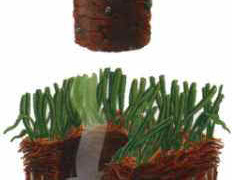Lawn care tip: When is the best time of year to weed?

If there’s anything more annoying than weeds sprouting up throughout your lawn, it’s pulling each of those weeds. It might even seem like the old wives’ tale about pulling gray hairs applies to weeds: pull one weed and two more grow back. But if you time your weed pulling or weed control treatments right, you might just be able to see a decrease in the following season.
Lawn care specialists advise that if your lawn is comprised of 50 percent or more weeds, then it’s time for a “do-over.” But if you haven’t quite hit that limit (even if sometimes it seems that way), then you just need to strategize your weed control and come up with an effective battle plan.
For optimal weed prevention, lawn care experts recommend weeding in the spring and fall when they’re at their weakest point. During the spring, all plants are gearing up to grow, even weeds. The roots are trying to pump as much energy into the leaves as possible, which is where you need to take them out, thus eliminating much of the energy supply and ensuring they don’t have a chance to spread their seeds around.
If your weed problem rears its ugly head during the summer, lawn care technicians recommend weeding throughout the summer season, but get ready for the big battle in the fall. By treating germinated seeds, you’re able to get the weeds before they’ve even sprouted. If you were lucky enough to jump on the weeds in the spring, by fall they will be still trying to recover from the damage and will likely die off during the cold winter months when their much-needed nutrients and sunlight aren’t as prevalent.
If you’re tired of weeds in the summer, call us before spring and fall to get a jump start on your weed battle!



